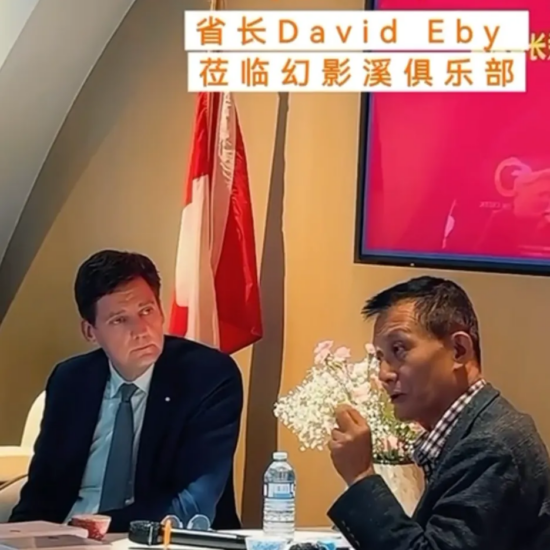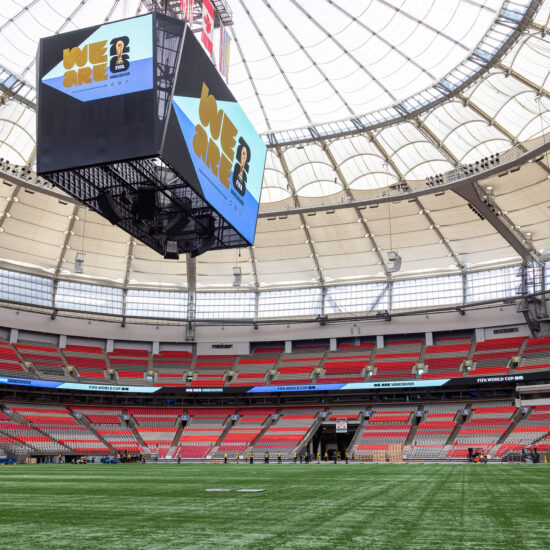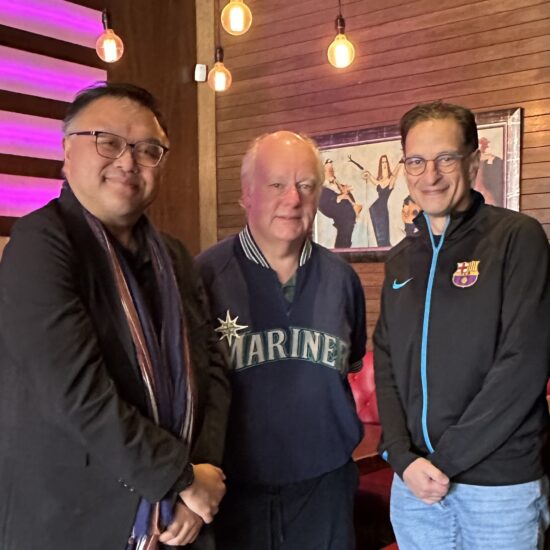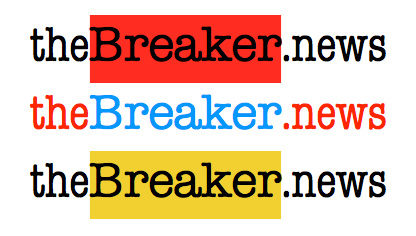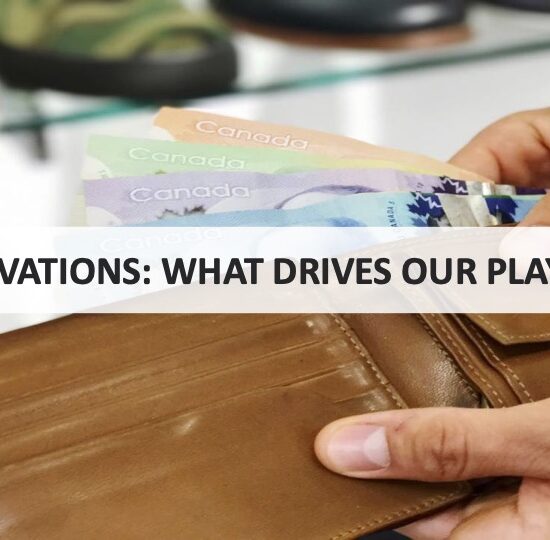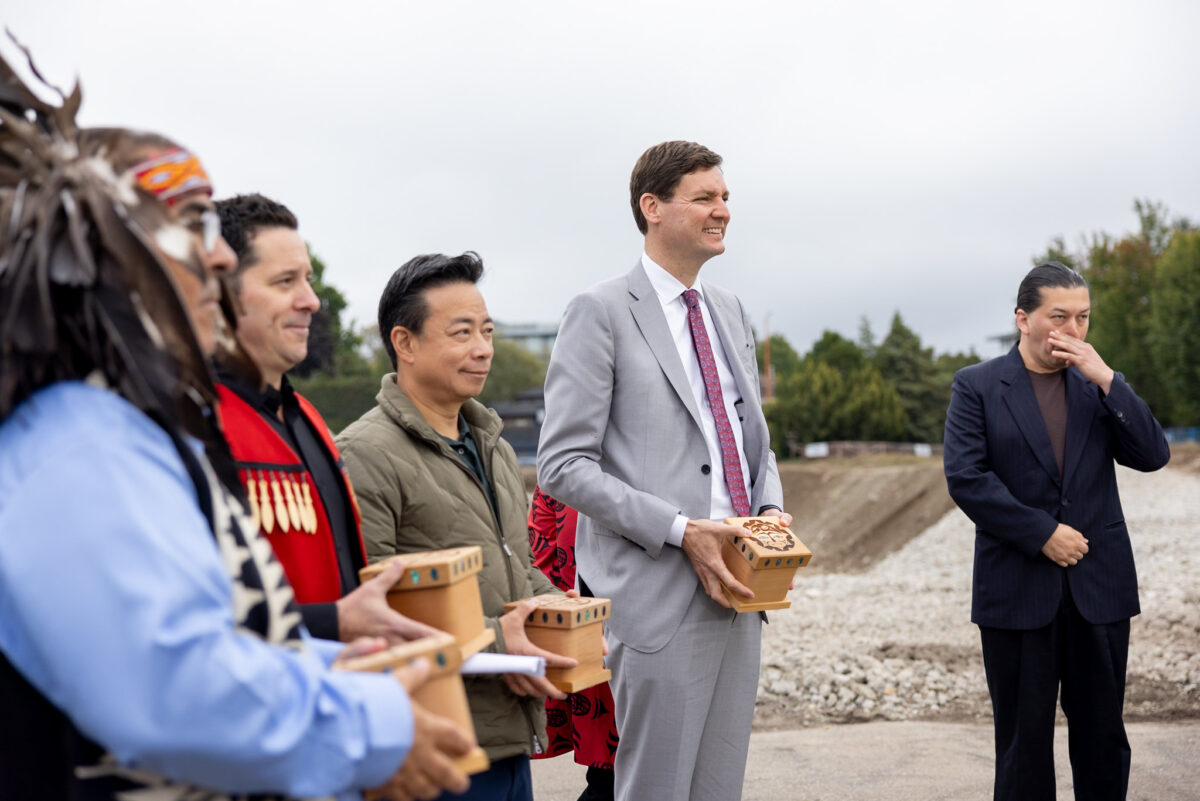
Guest commentator: Geoffrey S. Moyse
As a now-retired former B.C. government senior legal counsel on aboriginal law who spent 31 years advising six successive governments, I have an obvious interest in the subject of Indigenous reconciliation.
In 2019 the NDP government of the day enacted the Declaration on the Rights of Indigenous Peoples Act (DRIPA), which sets out a process for bringing B.C. laws into alignment with a non-legally binding UN Declaration on the Rights of Indigenous Peoples (UNDRIP). During debate on this legislation, then Minister Scott Fraser informed the legislature that the government’s intention was to apply UNDRIP in a manner consistent with section 35 of the Constitution Act, 1982.
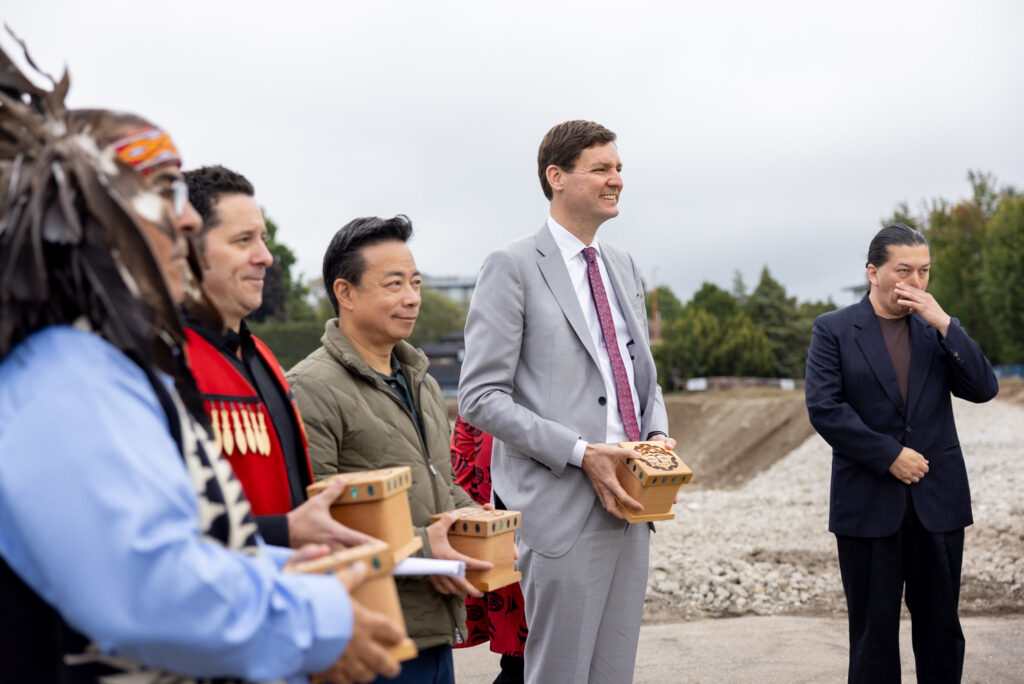
David Eby, centre, on Sept. 19 (BC Gov/Flickr)
Section 35 recognizes and affirms proven aboriginal and treaty rights in Canada. The Supreme Court of Canada has issued many judgments since 1982 defining those rights and setting out tests for their proof. This includes case law on the test for proving aboriginal title in Canada.
Unfortunately, there are a number of articles contained in UNDRIP, which is a non-binding UN declaration that has no force of law in Canada or British Columbia, that appear to be directly contradictory to, or at least potentially inconsistent with, section 35.
As I have been observing publicly available evidence of the progress on the government’s implementation of DRIPA, I am becoming convinced that there are two particular articles in UNDRIP which can be, and I think perhaps are being, interpreted in a manner contrary to section 35.
DRIPA sets out a process for bringing B.C. laws into conformity with the articles of UNDRIP. That obviously means bringing B.C. laws into conformity with articles such as Article 26 and Article 32(2) of UNDRIP.
Article 26 sets out a “definition” of territorial Indigenous ownership of all lands and resources found within a claimed territory. The definition of “territory” in that article can be interpreted in a manner which goes far beyond the nature and extent of Aboriginal title as set out by the Supreme Court of Canada under section 35, since it affirms ownership of land and resources based on mere use of land, which is not consistent with the test of exclusive occupation of land as of the date of sovereignty grounding aboriginal title in Canadian law.
Article 32(2) of UNDRIP provides that nothing government wishes to do with lands that are subject to the broad Indigenous ownership rights purported by article 26 can be done without the free and prior consent of Indigenous people.
Evidence of government’s apparent intent to embrace these articles can be seen in section 7 of DRIPA, which authorizes the government to enter into agreements which provide for “joint decision making” by the government with Indigenous governments over public lands or that set out the requirement for Indigenous consent before a government decision can be made at all.
It seems clear that the proposed amendments to the Land Act, which were quickly shelved by the government in response to a vehement public backlash, were based on a broad interpretation of article 26 Indigenous ownership and jurisdiction and reliance on the “consent” requirement of Article 32(2). They are clearly in no way based upon section 35 Canadian law.
Over the past two years I have seen many statements from government ministers about “stolen lands” and non-Indigenous “settlers”, along with admonitions that the public should not call themselves “British Columbians” for fear of offending those who see this province as illegitimate.
When I couple those statements with the manner in which I see Articles 26 and 32(2) of UNDRIP being promoted by the government in place of section 35, I am forced to ask myself what the government’s actual intentions are toward recognition of Indigenous ownership and jurisdiction over British Columbia’s public and private lands?
I find myself wondering if the vast majority of British Columbians believe that reconciliation should be based on a non-binding UN Declaration and government’s apparently broad interpretations of it, or would they more likely believe that reconciliation should be firmly based on the foundation of Canadian constitutional law?
UNDRIP does not balance the stated human rights of Indigenous peoples with the rights of other Canadians. Section 35 case law does a surgical job of ensuring that balance is maintained while protecting vital core Aboriginal and Treaty rights.
I have read the NDP election platform on this topic. I see absolutely nothing in it to indicate to me that a re-elected NDP government is actually committed to implementation of UNDRIP in a manner that is properly consistent with Canadian constitutional law. In fact, I find the “commitments” in it to be so intentionally vague as to be meaningless.
I certainly see nothing in it that persuades me that the divisiveness of calling British Columbians “settlers” on “stolen” Indigenous lands is going to stop. Is this what reconciliation with UNDRIP as the framework means for British Columbia society?
If so, then in my view it is nothing but a recipe for societal divisiveness in this province. I think public acceptability of the attempted amendments to the Land Act speak volumes in this regard.
As a lawyer of many years experience advising provincial governments in this province on Aboriginal law and who has worked for reconciliation for over 30 years, I have been dedicated to the belief that section 35 provides the proper basis for reconciliation in Canada. The government’s interpretations of UNDRIP to date have done nothing to convince me otherwise.
For more, click here and listen to Bob Mackin’s interview with Geoffrey Moyse on thePodcast.
Support theBreaker.news for as low as $2 a month on Patreon. Find out how. Click here.






